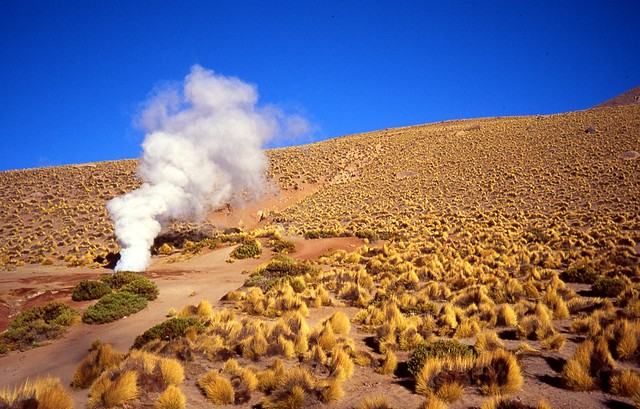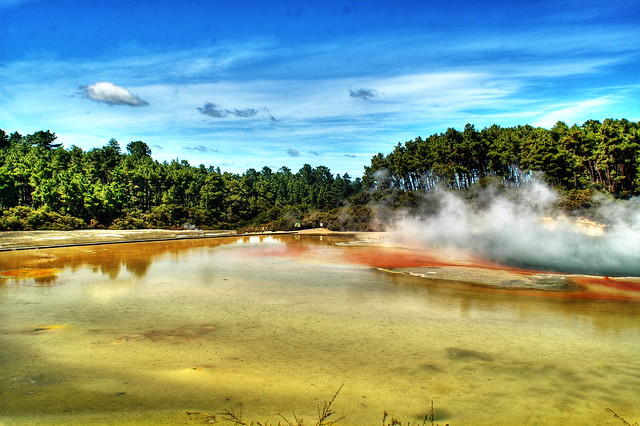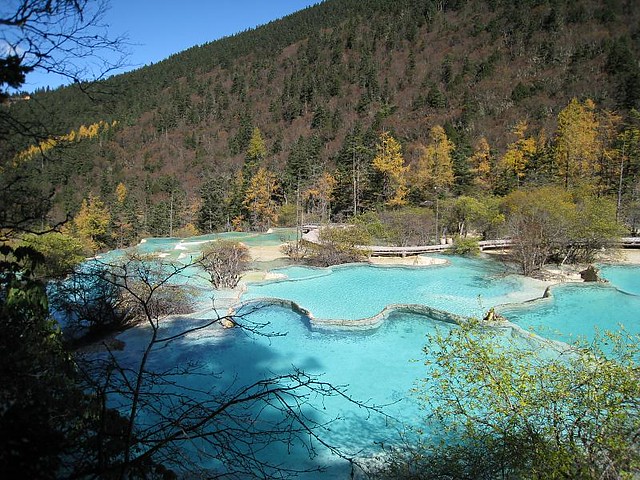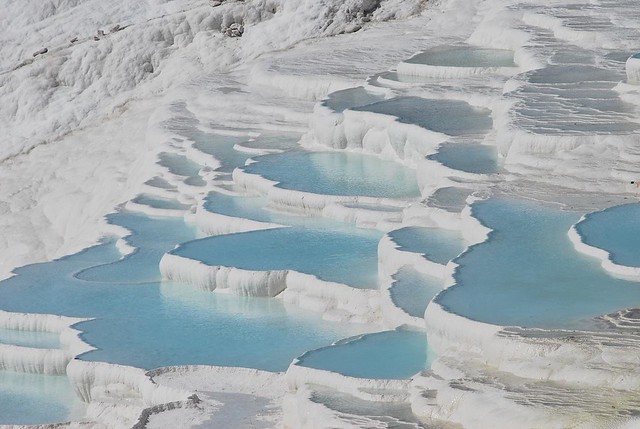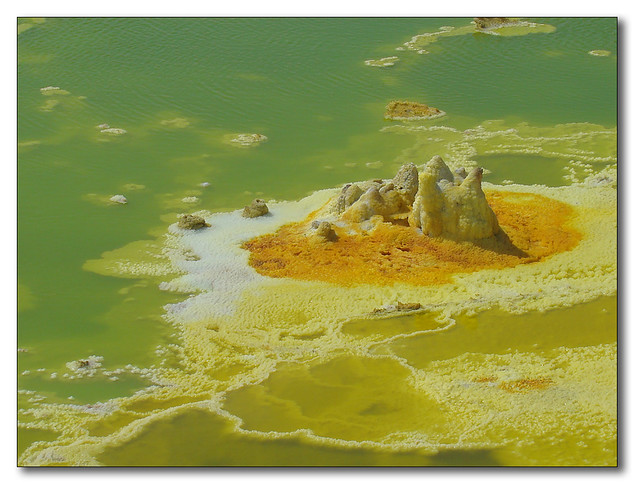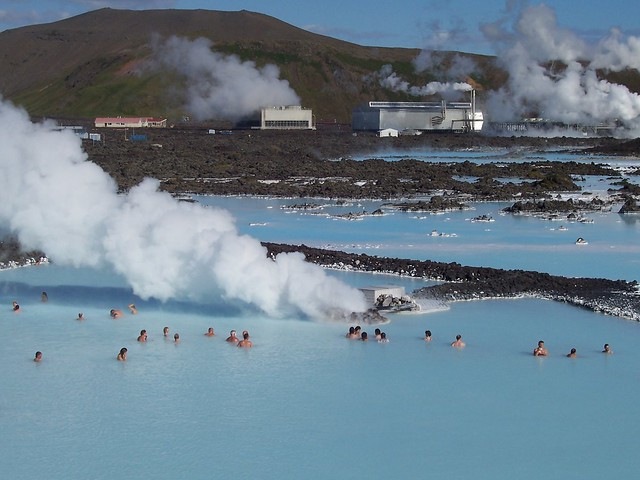Towns and villages give you a good, big picture of the soul of a country. Europe boasts breathtakingly beautiful towns and villages, each offering examples of regional architecture. Many towns and villages in Europe are located in a wonderful natural environment and are popular tourist destinations. Below we feature some of the most beautiful towns and villages you can find when you travel around Europe.
1. Reine, Norway

Reine on the Lofoten islands
Population: 342 inhabitants
Reine is the administrative centre of Moskenes municipality, located on the northern coast of Norway, above the Arctic Circle, about 140 miles (225 km) south of Tromsø. As of 2005, its population is of 342 inhabitants. Reine has been a commercial centre since 1743. Today tourism is important, and despite of its remote location, thousands of people visit this neighborhood annually. The largest weekly magazine in Norway (Allers) selected Reine as the most beautiful village in Norway in the late 1970s. A photograph over Reine from the mountain Reinebringen has been used for the front page of several tourist brochures and books.
2. Geiranger, Norway

Geiranger village and Geirangerfjord
Population: 250 inhabitants
Geiranger is a small tourist village in the western part of Norway. It lies at the head of the Geirangerfjord. The nearest city is Ålesund. Geiranger is home to some of the most spectacular scenery in the world, and has been named the best travel destination in Scandinavia by Lonely Planet. Since 2005, the Geirangerfjord has been listed as a UNESCO World Heritage Site. This third biggest cruise ship port receives 140 to 180 ships during the four-month tourist season. Several hundred thousand people pass through every summer, and tourism is the main business for the 250 people who live there permanently.
3. Smögen, Sweden

Population: 1,329 inhabitants
Smögen is a village situated in southwest part of Sweden with 1,329 inhabitants in 2010. It is one of the liveliest "summer towns" of the Swedish West Coast. The community actually straddled several islands that lay so close together that the space in between has since been filled, and is now considered as a single island. Smögen is well known for its long, wooden pier (around 600 m or 1,970 ft), filled with shops in old fishing huts, which are frequented by a multitude of tourists during the summer.
4. Ísafjörður, Iceland

Population: 2,600 inhabitants
Ísafjörður is a town in the north west of Iceland, seat of Ísafjarðarbær municipality. With a population of about 2,600 Ísafjörður is the largest town in the peninsula of Vestfirðir (Westfjords). It is located on a spit of sand in the Skutulsfjörður fjord. Fishing has been the main industry in Ísafjörður, and the town has one of the largest fisheries in Iceland. A severe decline in the fishing industry, for a variety of reasons such as political fishing restrictions in the early 80s and a decline in the fish population, has led the inhabitants to seek work elsewhere, leading to a decline in the town's population.
5. Siglufjörður, Iceland

Population: 1,206 inhabitants
Siglufjörður is a small fishing town in a narrow fjord with the same name on the northern coast of Iceland. Population in January 2011 was 1,206 but the town has been shrinking in size since the 1950s when the town reached its peak with 3,000 inhabitants. Today the town remains dependent on fishing industries although the herring are gone. The government of Iceland is attempting to reverse the population shrinking in the area by improving land transportation.
6. Castle Combe, UK

Population: 350 inhabitants
Castle Combe is a small village in Wiltshire, England, with a population of about 350. Situated in a conservation area on the southernmost edge of the Cotswolds and just twelve miles from Bath, this hidden gem has been welcoming visitors for at least a century. It is renowned for its attractiveness and tranquillity, and for fine buildings including the medieval church. Castle Combe is often called 'the prettiest village in England'.
7. Burnsall, UK

Population: 112 inhabitants
Burnsall is a village in district of North Yorkshire, England, and a popular destination for weekend tourists enjoying a sunny afternoon by the river. The delightful bridge which spans the river Wharfe is one of the most photographed of all bridges within the Dales National Park. Burnsall is surrounded by some lovely walks and for those with a little more energy, a walk up onto the fells offers a wonderful view of the surrounding area. A short walk along the river Wharfe takes you to the Hebden suspension bridge from where you can divert in several directions, making Burnsall an ideal location from which to explore the Yorkshire Dales.
8. Giethoorn, Netherland

Population: 2,620 inhabitants
Giethoorn is a village in the Dutch province of Overijssel. This village is called the Venice of the Netherlands for about 7.5 km (4.5 mi) of canals run through the little village. It was founded around 1230 when fugitives coming from the Mediterranian regions settled there. All traffic has to go over the water, and it is done in so-called "punters", they are 'whisper-boats' for they are driven by an electric motor, so they practically do not disturb the peace and quiet in this scenic little village. Many houses have been built on islands and they can only be reached by the wooden bridges. Some 50 little wooden bridges span the canals, which are only 1 meter (3 ft) deep.
9. Naarden, Netherland

Population: 17,174 inhabitants
Naarden is a town in the Gooi region in the province of North Holland in the Netherlands. Naarden is an example of a star fort, complete with fortified walls and a moat. The walls and the moat have been restored and are in a very good state. Also, this town is the home of the Netherlands Fortress Museum.
10. Dinant, Belgium

Population: 13,317 inhabitants
Dinant is a Walloon town located on the River Meuse in the Belgian province of Namur. Squeezed between the River Meuse and the high rocks that overlook it, Dinant is a little town indeed. Its main features are the river, the imposing citadel high above the town and the church with its characteristic pear shaped bell tower.
11. Cochem, Germany

Population: 4,929 inhabitants
In the most beautiful part of the Moselle Valley (South West Germany), where the river curves between Eifel and Hunsrück - lies the old town of Cochem. The Reichsburg Castle, situated on a precipitous rock high above the town, dominates the landscape. The many delicate pointed towers, battlements and oriels give the impression of a typical fairy tale castle, particularly as it is one of the few castles in Germany, which was rebuilt in its original style after its complete destruction. As impressive as the castle itself is the view of the Moselle Valley with its beautiful forests, meadows, fields and vineyards, as well as the old part of the town. The town of Cochem itself is a sight worth seeing, not only because of its narrow streets and twisty alleys, the lovingly restored half timbered houses with the typical slate roofs, but also because of its medieval town gates, churches and walls.
12. Lindau, Germany

Population: 24,772 inhabitants
Lindau is a Bavarian town and an island on the eastern side of Lake Constance, the Bodensee. It is the capital of the Landkreis or rural district of Lindau. The historic city of Lindau is located on an 0.68-square-kilometre (0.26 sq mi) island which is connected with the mainland by a road bridge and the causeway of the railway to Lindau station. The unique location of the city in one of the most attractive European cultural landscapes; the historic old part of the city on the island with its magnificent variety of protected historical buildings, which long ago progressed to the most photographed subjects around Lake Constance; the world-famous harbour scenery with its lighthouse and the Bavarian Lions – all this is representative of famous and highly-esteemed Lindau.
13. Dinkelsbühl, Germany

Population: 11,482 inhabitants
Dinkelsbühl is a historic city in Bavaria, Germany. This town is simply enchanting! Every day of every year, guests from all over the world are overwhelmed by the charms of one of Germany’s most beautiful medieval towns. Wherever they look, visitors encounter living history rather than the raucous attractions of a fun park. But Dinkelsbühl is more than just a fairy-tale town bearing witness to the Middle Ages, and it’s more than an important magnet for tourists situated in the heart of the Romantic Road. Dinkelsbühl is an attractive location for business, it has good educational facilities, and it is a popular residential area.
14. Rothenburg ob der Tauber, Germany

Population: 11,025 inhabitants
Rothenburg ob der Tauber is a town in the Franconia region of Bavaria, Germany, well known for its well-preserved medieval old town, a destination for tourists from around the world. This town has preserved the most beautiful medieval facade in Germany. The name "Rothenburg ob der Tauber" means, in German, "Red fortress above the Tauber". This is so because the town is located on a plateau overlooking the Tauber River. In the Middle Ages, it was an Imperial Free City.
15. Èze, France

Population: 2,960 inhabitants
Èze is a village in the Alpes-Maritimes département in southeastern France, not far from the city of Nice. This settlement is a medieval village perched like an eagles nest on a narrow rocky peak overlooking the Mediterranean sea. The ancient fortified village is still crowned with the ruins of its 12th-century fortified castle (torn down in 1706), sitting on a narrow rocky peak. The castle grounds host the well-known Jardin Exotique (botanical garden), and from the top (429 m or 1,400 ft) you'll have an good view of the coast (it will cost you, though).
16. La Roque-Gageac, France

Population: 412 inhabitants
La Roque-Gageac is arguably one the most beautiful places in Périgord Noir, or at least one of the most photographed in south-western France. Listed as one of France’s most beautiful villages, the riverside town is built along the right bank of the Dordogne River against a towering limestone cliff. This unique setting of narrow, peaceful streets and cliff-dwellings also enjoys a subtropical microclimate.
17. La Bastide-Clairence, France

Population: 1,017 inhabitants
In the heart of the Pays Basque (South West France) lies the village of La Bastide Clairence, founded in the 14C by the King of Navarre. During its 700-year history, the village has preserved its original street plan typical of the “bastide” (fortified) construction. Today, classed " the most beautiful villages of France", La Bastide Clairence is an ideal base for holidaying in the French Pays Basque: it offers quality accommodation, lively local life with the village festival and various other animations throughout the summer, not forgetting the numerous artisans and their workshop boutiques.
18. Beynac-et-Cazenac, France

Population: 514 inhabitants
Beynac-et-Cazenac is a little village located south west of France. This town is located in the department of Dordogne of the french region Aquitaine. The medieval Château de Beynac is located in this village, and it is one of the best-preserved and best known in the region. Beynac-et-Cazenac is classified as one of Les plus beaux villages de France (most beautiful villages of France).
19. Najac, France

Population: 752 inhabitants
Najac is a picturesque village set along a ridge above a bend in the Aveyron River. In the earlier part of the last century the village had around 2000 people but it suffered marked population decline as workers migrated to towns and cities. The village economy is based largely on tourism and agriculture. Most land in the commune is still used for farming and there are a significant number of long-term inhabitants. During the summer, the population increases significantly due to second home owners and holiday-makers. Most holiday home owners are British, Canadian, Dutch or from the north of France.
20. Český Krumlov, Czech Republic

Population: 14,056 inhabitants
Český Krumlov is a town in the South Bohemian Region of the Czech Republic, best known for the fine architecture and art of the historic old town and Český Krumlov Castle. Old Český Krumlov is a UNESCO World Heritage Site and was given this status along with the historic Prague castle district. The town is named Český Krumlov ("Bohemian Krumlov") to differentiate it from Moravský Krumlov ("Moravian Krumlov") in the southeast of the country.
21. Čičmany, Slovakia

Population: 204 inhabitants
Čičmany is a village and municipality in the Žilina Region of northern Slovakia. It is known as the first folk architecture reserve in the world (founded in 1977). Timbered houses with ridge roofs, galleries and pointed or linear wall decorations have been preserved in Čičmany. Of particular interest are the very specific white patterns which are painted on the exterior walls of the houses to decorate them. The local folk music, special folk costumes and folk dances of the village have been preserved as well.
22. Wengen, Switzerland

Population: 1,300 inhabitants
Wengen is a village in the canton of Bern, located in central Switzerland at an elevation of 1274 m (4180 ft) above sea level. This town has approximately 1,300 year-round residents. This number swells to 5,000 during summer and to 10,000 in the winter tourist season. Wengen is one of the centres for alpine skiing and hub of ski racing as a sport.
23. Mürren, Switzerland

Population: 450 inhabitants
Mürren is a traditional mountain village in Switzerland, at an elevation of 1,650 m (5,413 ft.) above sea level and unreachable by public road. The village is perched on the edge of a steep cliff and the only available option you have to get there is via cable car. Tourism is popular through the summer and winter; the village features a view of the three towering mountains: Eiger, Mönch, and Jungfrau. Mürren has a population of just 450, but has 2,000 hotel beds.
24. Hallstatt, Austria

Population: 815 inhabitants
Tucked away in the mountains of Austria you’ll find the tiny town of Hallstatt. Hallstatt and its population of less than 1000 residents rest on the southwestern shore of the Hallstätter See (a lake). In addition to the picturesque view of the town on the lake, tourists can see the world’s first salt mine, enjoy nearby skiing, take a trip to the World Heritage Museum, and visit the Dachstein ice cave. Though this village is very small, there are a few different hotels and restaurants to choose from.
25. Gmunden, Austria

Population: 13,073 inhabitants
Gmunden is a small town with 13,000 inhabitants and probably one of the most beautiful places in Austria. This town is situated next to the lake Traunsee on the Traun River and is surrounded by high mountains. It is much frequented as a health and summer resort. It is also an important centre of the salt industry in Salzkammergut. Things you will find only in Gmunden are, among others: lake Traunsee shipping cruises, Gmundner ceramics and ceramic manufacturies, land and lake castle Ort, renaissance city hall with ceramic chime, Grünberg cable car (ski mountain Grünberg), tram of Gmunden and "Traunsee-railways".
26. Piran, Slovenia

Population: 4,143 inhabitants
Piran is a town in the eponymous municipality in southwestern Slovenia on the Gulf of Piran on the Adriatic Sea. It is one of the three major towns of Slovenian Istria. The town resembles a large open-air museum, with medieval architecture and a rich cultural heritage. Narrow streets and compact houses give the town its special charm. Piran is the administrative centre of the local area and one of Slovenia's major tourist attractions.
27. Rovinj, Croatia

Population: 13,562 inhabitants
Rovinj is a town in Croatia situated on the north Adriatic Sea with a population of 13,562. It is located on the western coast of the Istrian peninsula and is a popular tourist resort and an active fishing port. The most numerous visitors to the town of Rovinj are Italians, Germans, Austrians, Dutch and British.
28. Kladovo, Serbia

Population: 8,913 inhabitants
Kladovo is a nice little town located in the Bor District of South-East Serbia. It is situated on the right side of the river Danube, surrounded by beautiful hills. Moderate continental climate and a large number of sunny days are characteristic for the region. There are two natural spring lakes in the very centre of Kladovo. A special attraction is a 1km (0.6 mi) long city beach on the river Danube. In this area, the river is very populated with various fish species.
29. Manarola, Italy

Population: 450 inhabitants
Manarola is a small town in northern Italy. It is the second smallest of the famous Cinque Terre towns frequented by tourists. Manarola is charming, rugged and quiet, with the beauty of a modest fishing village - these are some of the associations of this small village. Colourful fasades stacked high upon one another on a rugged cliff, to the right and left of a hardly noticeable creek, resembling an almost cubist painting. Not all local trains stop here, which makes the peak tourist season less busy.
30. Alberobello, Italy

Population: 11,040 inhabitants
Alberobello is a small town and comune in the province of Bari, in Puglia, Italy. It has about 11,000 inhabitants and is famous for its unique Trulli constructions. The Trulli of Alberobello are part of the UNESCO World Heritage sites list since 1996. A trullo (plural, trulli) is a traditional Apulian stone dwelling with a conical roof. They traditionally have whitewashed bases, conical rock-slab roofs, and an ornamental crown. The style of construction is specific to Itria Valley, in the Murge area of the Italian region of Apulia. Trulli were generally constructed as dwellings or storehouses. Traditionally they were built without any cement or mortar, thus avoiding taxation. The first trullo was built at least nine centuries ago.
31. Cudillero, Spain

Population: 5,855 inhabitants
Cudillero is a small village in the Principality of Asturias, Spain. Today, Cudillero's main economic activities are related to tourism, but it is also known for its fishing ships. A legend says that it was founded by the Vikings. People from Cudillero speak Spanish and a dialect called Pixueto.
32. Piódão, Portugal

Population: 178 inhabitants
The historical village of Piódão is located in the slope of Serra do Açor (a mountain in central Portugal). The houses are built in the local materials: slate walls, roofs covered with stone slabs and wooden doors and windows, painted blue. The inhabitants work mainly on agriculture (corn, potatoes, beans, vines), raising livestock (sheep and goats) and in some cases on beekeeping. It was considered Portugal’s most typical village in the decade of 1980.
33. Kardamyli, Greece

Population: 6,000 inhabitants
Kardamyli is a impressive village next to the sea located in the region of Mani, southern Greece. The area near Kardamyli is defined in the tourist guides as the new Côte d'Azur. The scenery is impressively theatrical, full of contractions with crystal blue waters, large cypresses, wild olive tree fields and far distant mountains covered with snow, makes Kardamyli one of the most beautiful villages with view to the calm sea and to the wonderful sunsets of the Messinian gulf. Kardamyli is one of the most well guarded secrets of south Mediterranean. One exclusive, small, untouchable shelter, pride for his villas, the charming stone maisonetts, bloomed gardens and fantastic beaches.
Source






















































